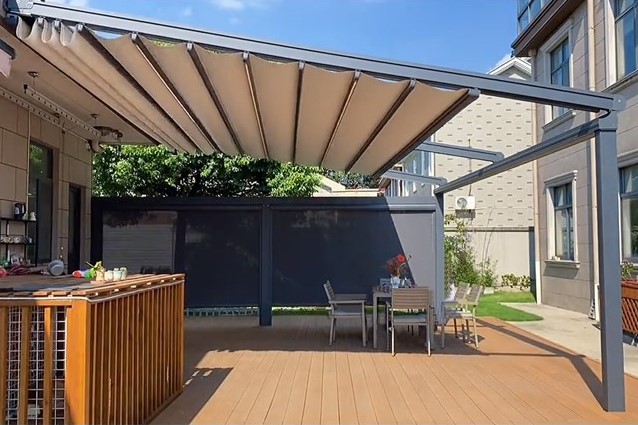At the end of the swimming season, it is advised to follow this closing down procedure, to protect the pool and equipment, and also to make it easier to open in the spring. If you want to buy swimming pool covers, you can navigate to http://www.poolenclosures-poolcovers.co.uk.

Image Source: Google
Following are the steps to follow during covering your pool efficiently:
1. Remove the solar cover to protect from frost and ice.
Wash thoroughly, fold or roll, and store it in a clean, dry. solar blankets vulnerable to attack by chlorine so the cover must be washed before storing for the winter. Each roll had to be moved indoors if possible if not, fitting Storage Reel Cover will offer some protection.
2. Use a pool brush to clean
Use a pool brush to clean the entire surface of the pool and then remove dirt and debris, such as leaves, with skimming nets, and finally vacuum the pool. Dirt left in the water is a common cause of algae growth. To avoid this, make sure it is removed now.
3.Adjust pH
Adjust the pH to between 7.2 and 7.6 and doses using Chlorine Shock Granules. The effectiveness of chlorine can be quickly reduced if the pH is out of range. A good dose of chlorine at the end of the summer will help to prevent algae growth during the period close down.
4. Add winter Algaecide
Next, be sure to add the correct dose of winter Algaecide, to keep the water clean up over the winter. Use one of the longer life or standard algaecide. Long-life covered only once, but more expensive, while the standard needs to be added every 2 weeks. You need to use specialist Winter Algaecide, rather than a single summer, which does not contain any flocculants.
5. Do Backwash filter
Backwash filter, to remove dirt and sediment, leaving clean sand for a new season.
6. Drain Water
It is important to drain the water from the pond. This allows room for the winter rainfall, and also of the pipeline in case of freezing temperatures. All equipment must be drained of water and if possible stored somewhere dry and warm.
7. Use floating materials
Floats some floating material (ie some parts filled plastic bottles) in the water to allow the expansion of the ice because it prevents damage. If the shape of the plastic ice can take on the expansion of the ice rather than a wall.
8. Remove Equipment
Next, each piece of equipment can be removed, such as stairs, skimmer baskets, etc., should be kept inside away from the elements.
9. Fit your cover
Finally, you have to fit your winter cover, which will prevent the debris into the pool while it is closed. Make sure the pool fits properly if not all of the work done so far could be in vain.
Check the pool periodically during the winter. Add more winterising chemicals if necessary, and lower the water level in the case of heavy rainfall.


